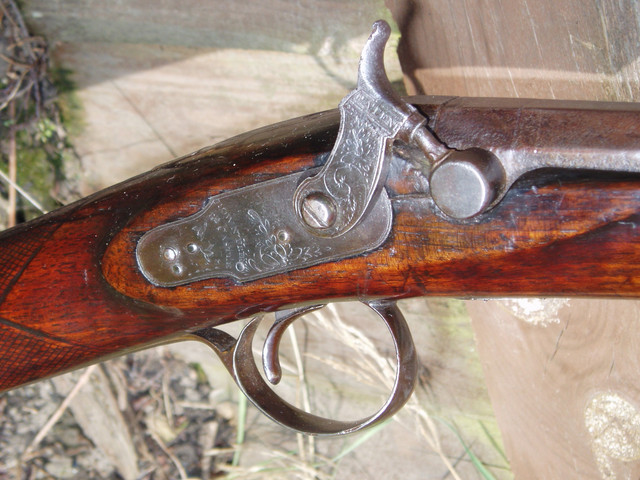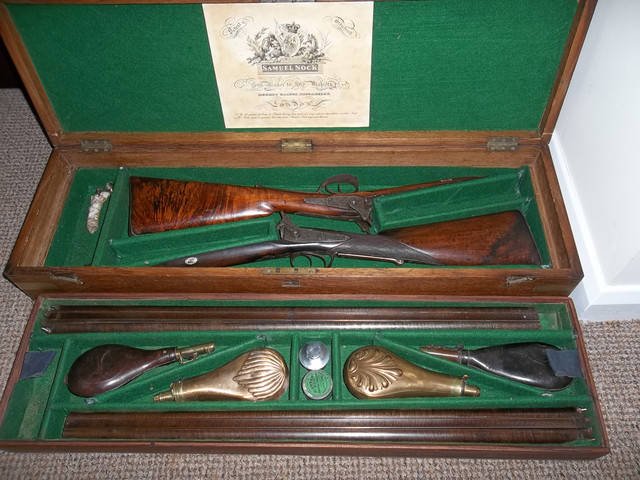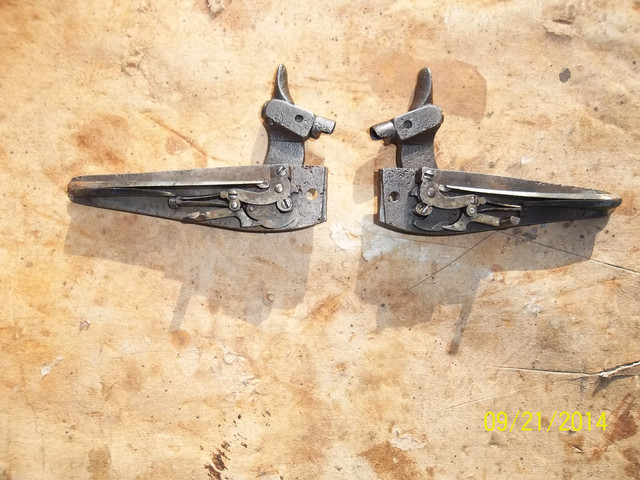The short period from 1800-1820 saw many different patents of ignition for guns .When Forsythe discovered fulminate for ignition of his scent bottle lock saw a new era in firearms His fulminate was used in many patents such has tube locks , patch locks and then the percussion cap much to the down fall of many gun makers in bankruptcy who Forsythe sued for using his compound which included Joseph Manton gun maker
The tube lock and the patch lock soon lost favour for the percussion cap the patch lock With its detachable nose was converted to percussion after the copper cap became used not for getting that the first percussion caps invented by Joshua Shaw were made of iron and were refilled and used again
The patch lock was the most used although there were other inventions using fulminate ,James Rowntree was one of the first using a early type of back action lock ,also Nocks patent back action lock but Charles Spencer used a side lock in design to a flint lock See Images
Feltwad
Charles Spencers Side Lock

Rowntrees Back Action Lock

Nocks Patent Back Action

The tube lock and the patch lock soon lost favour for the percussion cap the patch lock With its detachable nose was converted to percussion after the copper cap became used not for getting that the first percussion caps invented by Joshua Shaw were made of iron and were refilled and used again
The patch lock was the most used although there were other inventions using fulminate ,James Rowntree was one of the first using a early type of back action lock ,also Nocks patent back action lock but Charles Spencer used a side lock in design to a flint lock See Images
Feltwad
Charles Spencers Side Lock

Rowntrees Back Action Lock

Nocks Patent Back Action








